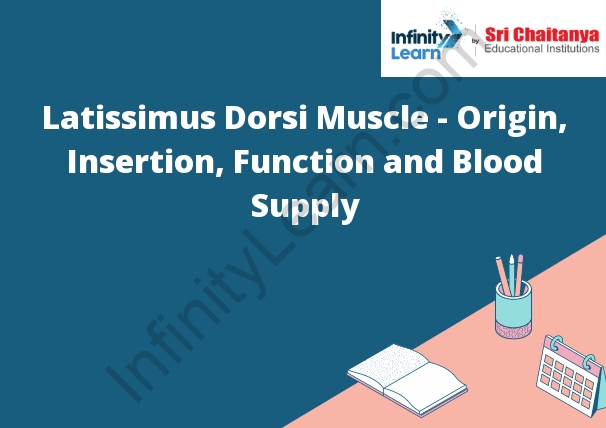Table of Contents
Latissimus Dorsi Muscle
The latissimus dorsi muscle is a large, flat muscle that spans the entire back. It attaches to the spine, ribs, and shoulder blade and assists in the movement of the arm and shoulder. The latissimus dorsi is a powerful muscle and is often used in weightlifting and other strength-training exercises. Latissimus Dorsi Muscle – Origin Insertion Function and Blood Supply.
The latissimus dorsi muscle is a large, flat muscle that covers the back and side of the torso. The muscle originates on the lower back, just below the spine, and fans out across the back and sides of the body. It attaches to the upper arm bone (humerus) at the shoulder joint. The latissimus dorsi muscle helps to extend and rotate the arm, and to move the torso and hips. It is also responsible for the powerful backswing in many sports, such as golf and tennis.
The latissimus dorsi muscle can be easily identified by its broad, flat shape and the distinctive “V” shape of its fibers as they run down the back. The muscle is often called the “lats” by bodybuilders and other athletes. Strengthening the latissimus dorsi muscle can help improve athletic performance, and can also help to correct posture and relieve back pain.

Latissimus Dorsi Origin and Insertion
The latissimus dorsi muscle is a large, flat muscle that covers the lower and back parts of the torso. It originates on the lower back, just below the spine, and inserts on the upper arm bone, near the shoulder. The latissimus dorsi muscle helps to extend, rotate, and adduct the arm. It also helps to pull the trunk backwards and downwards, as in a backswing in golf.
The Latissimus Dorsi muscle is a large, triangular muscle located on the back. It is the largest muscle in the back and is responsible for many movements of the arm and shoulder. The Latissimus Dorsi originates on the spinous processes of the lower thoracic and upper lumbar vertebrae, and inserts on the humerus bone of the arm.
The Latissimus Dorsi is responsible for several different movements of the arm and shoulder. It assists in flexing the arm at the shoulder joint, adducting the arm towards the body, and extending the arm backwards. It also helps to stabilize the shoulder joint.
Relations hips in a family
A family is a group of people who are related to each other. Families come in all shapes and sizes.
Families share a close bond. They rely on each other for emotional support, and they help each other out when needed. Families also share a common history. They often have traditions that they celebrate together.
Families can be a source of happiness and strength, but they can also be a source of conflict. Families often have disagreements about things like money, parenting, and where to live.
The most important thing for a family is to maintain open communication. Families that communicate effectively usually have the strongest relationships.
Latissimus Dorsi Muscle – Origin Insertion Function and Blood Supply.
Blood Supply to the Brain
The brain is supplied with blood by the carotid and vertebral arteries. The carotid arteries originate from the aorta and supply blood to the front of the brain. The vertebral arteries originate from the subclavian arteries and supply blood to the back of the brain.
The brain is one of the most important organs in the body. It controls all of the other organs and it is responsible for our thoughts, feelings, and movements. The brain receives its blood supply from the two carotid arteries, which are located on either side of the neck. The carotid arteries branch off of the aorta, the main artery in the body. The aorta branches into many smaller arteries, which supply blood to all of the organs in the body.
The carotid arteries carry oxygen-rich blood to the brain. The blood flow in the carotid arteries is controlled by the carotid sinuses, which are located at the base of the neck. The carotid sinuses contain sensors that detect changes in blood pressure. When the carotid sinuses detect a decrease in blood pressure, they send a signal to the brain that tells the brain to increase the blood flow to the brain.
The autonomic nervous system is responsible for controlling the involuntary activities of the body, such as the heartbeat and the contraction of the muscles in the walls of the arteries. The autonomic nervous system consists of two parts, the sympathetic nervous system and the parasympathetic nervous system. The sympathetic nervous system is responsible for the fight or flight response, while the parasympathetic nervous system is responsible for the rest and digest response.
Latissimus Dorsi Muscle – Origin Insertion Function and Blood Supply.







